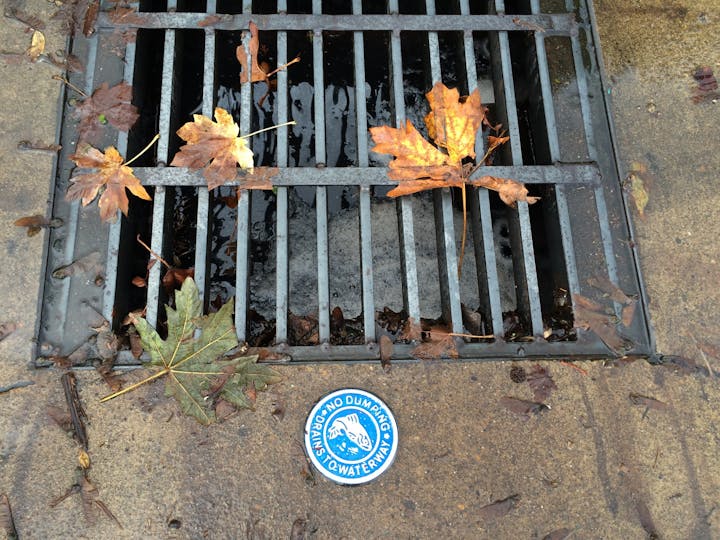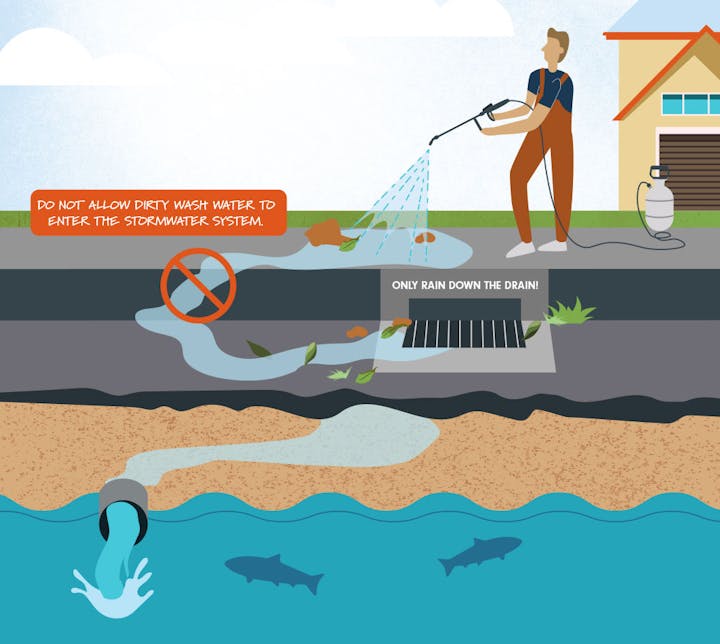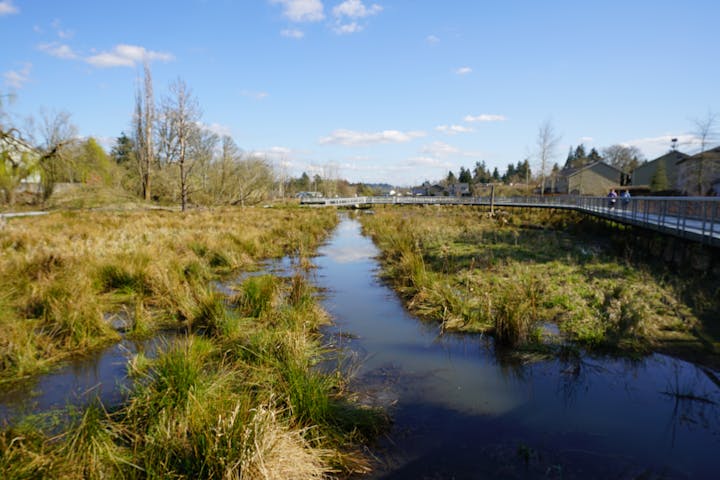Watershed Protection

Did you know that storm water runs directly into local ditches, creeks and rivers without treatment?
Oak Lodge Water Services implements the Municipal Separate Storm Sewer System (MS4) Permit required by the Oregon Department of Environmental Quality (DEQ) under the National Discharge Elimination System (NPDES) to help reduce stormwater pollution. OLWS partners with Clackamas County and 11 co-permittees to implement the Clackamas Phase I MS4 Permit in our area. Oregon DEQ bases the requirements in part on the Water Quality Status and Trends Analysis. The permit requires human efforts to keep pollution out of waters of the state.
Watershed protection actions help humans, animals, fish and plants thrive.
- A watershed is an area that collects and directs rainfall and snow melt into catch basins, pipes, ditches, creeks, streams, rivers, and eventually into the oceans.
- Storm runoff from streets is currently the most significant source of water pollution in our country.
- Rain washes over streets, roofs, lawns, and parking lots, picking up trash, oil, sediment, bacteria, pesticides, chemicals and metals from tires or brakes.
- Polluted runoff washes into our local waterways causing aquatic life, like fish, to be impaired.
Watershed protection occurs when all of us work together to take small actions to reduce water pollution.
If you have any comments or questions regarding this information, please contact Tessie Prentice, Assistant District Engineer at tessie.prentice@olws.org or by phone at (503) 353-4226.
The Municipal Separate Storm Sewer System (MS4) Permit requires OLWS to design and fulfill Best Management Practices as part of a Stormwater Management Program (SWMP). This SWMP complies with the National Pollutant Discharge Elimination System (NPDES) under the Federal Clean Water Act.
i. Annually inspect all catchbasins in one of five zones of OLWS.
ii. Conduct catchbasin and line maintenance as needed based on inspection results as a preventive maintenance measure.
iii. Provide routine customer service response throughout the District, and route emergency service requests to Clackamas County for emergency response, including flooding of roads, safety risk, or additional ditch cleaning, street sweeping, and winter road maintenance.
iv. Respond to routine service requests that Clackamas County sends over, communicate back to Clackamas County about the nature of the resolution.
v. Collect and share data from tasks completed and provide to CCDTD, for inclusion into the MS4 Annual Reports.
- Keep your tires properly inflated to minimize microplastic pollution from entering road runoff.
- Keep leaves, grass clippings, animal waste, dirt, and litter out of storm drains, ditches, creeks, ponds and wetlands.
- Use non-toxic alternatives to toxic pesticides and herbicides.
- Pick up pet waste. It contains bacteria and parasitic organisms that can wash into local waterways and contaminate streams.
- Plant ground cover and shrubs to cover bare earth and prevent erosion
- Mark storm drains in your neighborhood with the “Dump No Waste, Drains to Streams” message. Contact OLWS for free materials and instructions.
- Properly dispose of or recycle motor oil, antifreeze, paint, solvents and other toxic materials. For proper disposal information, call Metro Recycling Information at (503) 234-3000.
- If you would like to do more, check out the North Clackamas Watershed Council for volunteer opportunities in your community.
 Contact Us
Contact Us


.png?ixlib=rb-1.1.0&or=0&w=720&h=720&fit=max&auto=format%2Ccompress&s=a573f8ae01400793dcaa54495ce9dd0b)
.png?ixlib=rb-1.1.0&or=0&w=720&h=720&fit=max&auto=format%2Ccompress&s=0a0b22ae0ab65259fe501e452ef922bd)


.png?ixlib=rb-1.1.0&or=0&w=720&h=720&fit=max&auto=format%2Ccompress&s=6493defdb7c1935dfec7993f273007c5)

